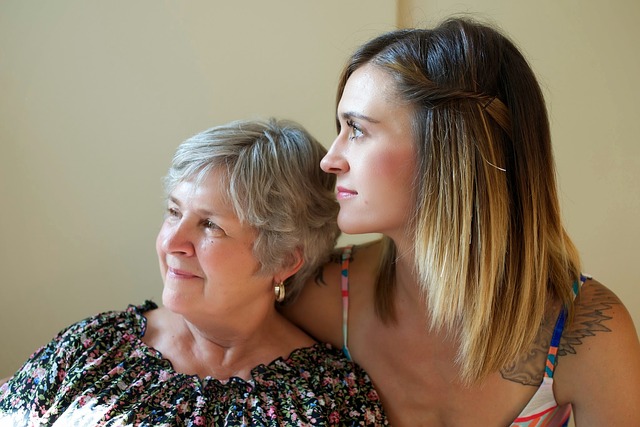Diabetes is a serious health condition that affects women in all life stages. It is also unique to women because it can impact on the health of both a mother and her unborn children.
With the increasing life span of women and the rapid growth of minority populations in the United States, the number of women at high risk for diabetes and its complications will continue to increase, placing added demands on the health care delivery system.
This article examines the challenges and risks of diabetes in each stage of a woman’s life.
Of the 15.7 million people with diabetes in the United States, more than half (8.1 million) are women.
Minority racial and ethnic groups are the hardest hit by the disease. The prevalence of diabetes is at least 2-4 times higher among black, Hispanic, American Indian, and Asian Pacific Islander women than among white women.
About 90-95 percent of women with diabetes have type 2 (formerly called adult-onset) diabetes. Type 2 diabetes usually develops after age 40 and occurs when the body’s cells become resistant to insulin. Insulin is a hormone secreted by the pancreas that allows glucose (sugar) to enter the body’s cells and be converted to energy. Type 1 diabetes (formerly juvenile-onset) occurs because the pancreas makes little or no insulin.
Social, economic, and political barriers sometimes block high quality care and easy access to health care for women with diabetes. Social and economic issues will leave many older women with diabetes living alone and poor. Poverty is also a major concern for women of childbearing age who have diabetes.
Women with diabetes have a lower life expectancy than women without diabetes. The risk of heart disease, the most common complication of diabetes, is more serious among women than men.
Among people with diabetes who have had a heart attack, women have lower survival rates and a poorer quality of life then men. Women are also at greater risk from blindness due to diabetes than men.
All parts of society–public and private–are more effective when they work together long-term to address the public health issues of reducing the burden of diabetes among women.
The Adolescent Years (10-17 years)
Most adolescents aged 10-17 years with diabetes have type 1, an autoimmune form of the disease in which the pancreas produces little or no insulin. Without insulin, fat and sugar remain in the blood and eventually can damage vital organs.
Physiological and psychological changes in puberty make diabetes management and control more difficult.
About 61,500 girls younger than 20 years have type 1 diabetes; 92 percent are white, 4 percent are black, and 4 percent are Hispanic or Asian American.
Acute complications such as ketoacidosis (acid build-up in the blood) or hypoglycemia (extremely low blood sugar) are more common than chronic complications among adolescent girls with type 1 diabetes. In one study of 9-16-year-olds with diabetes who were monitored for 8 years, 30 percent of girls had had at least one episode of ketoacidosis and 21 percent had had at least one episode of hypoglycemia. If not treated, both can lead to coma and death.
The mortality rate among girls with type 1 diabetes is nearly 5 times greater than the mortality rate of the general population of girls aged 10-19 years. Girls seem to have a significantly greater risk of dying than boys at the onset of type 1 diabetes.
By age 20, 40 percent to 60 percent of people with diabetes have retinopathy, or diabetic eye disease. Retinopathy can lead to blindness if untreated. The risk to develop proliferative retinopathy—the most severe form—is higher for girls.
Current evidence suggests that eating disorders may be significantly higher among young women with type 1 diabetes than among young women in the general population.
The incidence of type 2 diabetes appears to be increasing among both girls and boys, particularly in some racial and ethnic minority groups. Formerly called adult-onset diabetes, type 2 diabetes normally develops after age 40. Unlike type 1, type 2 diabetes is linked to obesity and physical inactivity and occurs when the body loses its ability to use insulin. Complications from type 2 closely resemble those associated with type 1 diabetes.
The increased prevalence of obesity among adolescent girls may play a role in the 10-fold increase in type 2 diabetes among adolescents beginning in the 1990s.
The Reproductive Years (18-44 years)
About 1.85 million women of reproductive age (18-44 years) have diabetes; about 500,000 of them do not know they have the disease. Women of minority racial and ethnic origins are 2-3 times more likely than non-Hispanic white women to have diabetes.
Type 2 diabetes accounts for the majority of diabetes cases identified during this life stage. Most women with type 1 diabetes were diagnosed during childhood or adolescence.
From 1990 to1998, diabetes rates increased 70 percent for women aged 30-39.
Reproductive-aged women with type 2 diabetes have fewer years of education, lower incomes, and are less likely than women without diabetes to be employed.
Death rates for women aged 25-44 with diabetes are more than 3 times the rate for women without diabetes.
Between 2.5 percent and 4 percent of women in the United States develop gestational diabetes during pregnancy. This type of diabetes results from the body’s resistance to the action of insulin. The increased resistance during pregnancy is caused by hormones produced by the placenta.
Gestational diabetes usually ends after the baby is born, but women with gestational diabetes have up to a 45 percent risk of recurrence with the next pregnancy and up to a 63 percent risk of developing type 2 diabetes later in life.
Increasing numbers of women, especially nonwhite women, are at risk of having pregnancies complicated by diabetes. American Indian women have considerably higher rates of gestational diabetes than the national average. For instance, prevalence for Zuni Indian mothers is 15.1 percent and for Navajo Indian women the rate is 10.4 percent among mothers aged 30-39 years.
Although expectant mothers with diabetes can and do have normal, healthy pregnancies and deliveries, they are at greater risk for complications such as preeclampsia, Caesarean section, and infections.
The intergenerational effect of diabetes during pregnancy has long-term effects on the metabolism and health of the child born of that pregnancy. Children of a mother with diabetes have up to a 10-fold increased risk of becoming obese during childhood as well as developing glucose intolerance in puberty–both risk factors for type 2 diabetes.
The Middle Years (45-64 years)
By 2010, the number of women in midlife (ages 45-64) is expected to grow from about 27 million to 41 million. Women in this stage of life are more vulnerable to major chronic diseases such as diabetes.
Nearly all women aged 45-64 years with diabetes have type 2 diabetes.
The prevalence of diabetes has been increasing steadily in all demographic groups for several decades. Prevalence rates for women aged 45-55 years were less than 2 percent in the 1960s, but rose consistently in the 1980s and 1990s. In the early 1990s the overall rate was about 6 percent for women aged 45-64 years.
For middle-aged women, type 2 diabetes is at least twice as common among nonwhites as among whites. Among women aged 50-59 years the prevalence was 23 percent for blacks, 24 percent for Mexican Americans and 9.7 percent for whites.
American Indian women, are particularly vulnerable to diabetes. One study found that 70 percent of Pima Indian women 45-64 years old have diabetes. An estimated 41 percent of Navajo women in the same age group have diabetes.
Middle-aged women with type 2 diabetes are less likely than women without diabetes to be married (58.3 percent versus 72.2 percent); more likely to be widowed (15.6 percent versus 9.4 percent), or divorced or separated (19.3 percent versus 14.5 percent).
Overall, middle-aged women with type 2 diabetes have less education, lower income, and are less likely to be employed than women without diabetes. More than half of women 45-64 years old with diabetes have an annual family income of less than $20,000, and 28.5 percent have less than $10,000. This compares with 30.5 percent and 11.3 percent respectively for women without diabetes.
Diabetes is a leading cause of death among middle-aged American women. In 1996, diabetes ranked fifth among white women, fourth among black and American Indian women, and third among Hispanic women aged 45-64 years.
Coronary heart disease is an important cause of illness among middle-aged women with diabetes and rates are 3-7 times higher among women 45-64 years old with diabetes than women without diabetes.
The Elder Years (65 + years)
The number of women aged 65 and older is expected to grow from approximately 20 million in 1995 to 23 million in 2010. Because women live an average of 7 years longer than men, there are nearly twice as many older women as older men, thus elderly women with diabetes outnumber elderly men with diabetes in the United States.
About 4.5 million women aged 60 years and older have diabetes and one quarter, or 1.2 million, do not know they have the disease. Most elderly women with diabetes have type 2 diabetes.
Between 1980 and 1994, the number of recognized new cases of diabetes among women aged 65 years and older increased from 97,000 to 181,000 (45.7 percent).
Obesity, weight gain, and physical inactivity are the major risk factors for type 2 diabetes among women. Among people aged 65 years and older who have diabetes, 70.4 percent of women are 20 percent over their desired weight, compared with 38.2 percent of men, and 25 percent are obese (50 percent over their desired weight).
Among women aged 60-74 years, 33 percent of black or Mexican American women have diabetes compared with 16 percent of white women. Among American Indian women, approximately 32 percent over the age of 65 years have diabetes.
By the age of 65 years, women have half the income of men and are twice as likely to live in poverty. Almost half (47.7 percent) of elderly women with diabetes have an annual income of less than $10,000 compared with 31 percent of women without diabetes.
Chronological age interacts with diabetes to accelerate diabetes complications such as heart disease, stroke, kidney disease, and blindness. Elderly women with diabetes are at particularly high risk for heart disease, visual problems (cataracts and glaucoma), hypergylcemia (extremely high blood sugar) or hypoglcemia (extremely low blood sugar), and depression.
Diabetes is one of the leading underlying causes of death among women aged 65 years and older. The death rate for diabetes increases with age. Elderly black women have twice the rate of death from diabetes as elderly white women, and elderly Mexican American women have almost four times the rate.










